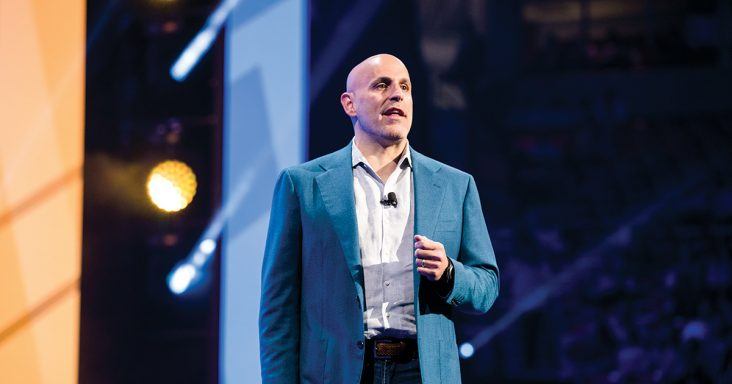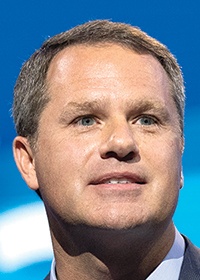Walmart mulls future of Jet.com three years after acquisition
by July 31, 2019 10:32 am 8,813 views

Marc Lore
When Walmart paid $3.3 billion for Jet.com in August of 2016, Wall Street saw the move as bold step — and somewhat necessary — to help the Bentonville-based retailer up its online game.
At the time, it was the highest price Walmart had paid for an internet retailer, but the deal included Jet’s highly-regarded founder and CEO Marc Lore, who agreed to stay with Walmart for a minimum of five years. The plans at the time were for the two companies to run autonomously, with Jet keeping offices in Hoboken, N.J., where Lore would continue to reside and work as CEO of Walmart U.S. eCommerce.
Walmart President and CEO Doug McMillon said in 2016 Walmart was looking for ways to lower prices, broaden assortment and offer the simplest, easiest shopping experience possible for customers.
“We believe the acquisition of Jet accelerates our progress across these priorities,” McMillon said in August 2016. “Walmart.com will grow faster, the seamless shopping experience we’re pursuing will happen quicker, and we’ll enable the Jet brand to be even more successful in a shorter period of time. Our customers will win. It’s another jolt of entrepreneurial spirit being injected into Walmart.”
The retail giant continued to spend heavily on technology, and Lore set out to improve the look and feel of the Walmart.com shopping experience. He also went after several online startups, which Walmart acquired as well, giving the retailer more insight in higher-margin categories like apparel with the purchase of ModCloth, Moosejaw, Bonobos, Eloquii, Shoes.com and Bare Necessities. The company picked up the final-mile delivery business Parcel, the art startup Art.com and Hayneedle, the home goods e-tailer owned by Jet.com.

Walmart also poured more funds into Store No. 8, an incubator for technology that is used to help efficiencies in stores and improve customer shopping experiences. Out of Store No. 8 came Jetblack, a concierge shopping service, for a select few in Manhattan who pay a subscription fee and join by invitation only.
Lore told the media in June the service is still running in Manhattan, but there were no plans to expand it.
Two years ago, Walmart said Jet would focus on urban areas and Walmart.com would continue to serve the more suburban areas around the country. Jet experimented with a pop-up store in Manhattan, with new management taking over last year when Liza Landsman exited the company. Jet was also supposed to lure more niche brands, which it did. But in recent months, Walmart has been telling many suppliers to focus solely on Walmart.com, an indication there are more changes coming for Jet.com.
Jet executives did not address the media at this year’s shareholders’ week in Bentonville, also an indication their presence would likely be smaller in the future. Walmart recently announced Jet President Simon Belsham would be leaving the company and the organizational leadership will be managed by Walmart.com.
WALMART’S OPERATING MODEL
Keith Anderson, senior vice president of strategy and innovation at Profitero, said the recent move to combine the leadership of Jet and Walmart validates what has been rumored for at least a year.
“It’s not really a surprise,” Anderson said. “Walmart has almost never supported or scaled brands or banners that it has acquired in the U.S. At least, not the way it does in international markets.”
Anderson said manufacturer clients of Profitero have been saying for some time Jet isn’t replenishing or buying new items. He said Walmart’s experiment with Jet.com to try and fill gaps with more affluent and urban shoppers is just that — an experiment.
“I think Walmart was really buying Marc Lore’s vision, strategy, team and tech [not Jet as a standalone brand or operation], and I think Marc understood and accepted that,” Anderson said. “When Walmart acquired Jet, the whole industry’s focus was on Jet’s valuation as a multiple of its sales. But Walmart didn’t buy Jet for what Jet was or would become as its own entity. It bought it for what that leader and team could do for Walmart.”
Anderson said for Jet.com to continue to grow outside of Walmart, more investment would be needed, and that model is not compatible with Walmart’s operating model.
He said Lore founded Jet in 2014 on the premise that digital commerce would not necessarily be winner-take-all. At the time, Amazon had not yet emerged as the clear, dominant front-runner it is today. He said Amazon had exposed itself to low-end disruption through its increasing dependence on Prime members.
“Now, imagine you are Walmart’s CEO Doug McMillon, appointed in 2014, nearly two years before the Jet deal closes, and you hear this vision from an ambitious executive that spent years inside Amazon via the acquisition of Diapers.com,” Anderson said.
Wall Street agreed Lore was a bonus for Walmart in 2016, and that’s still true today. Walmart executives told Wall Street two years ago it would give up some profits to invest more heavily in technology to ready the retailer for the future.
Recent reports that Walmart.com will lose $1 billion this year are eye-catching. Walmart does not break out financial results for Walmart.com for reporting purposes and that number came from insiders who may or may not be accurate. Walmart did tell analysts this year, however, the online business is not yet profitable, and it gave no timeline for when that might happen.
WHAT’S AHEAD
Walmart is no doubt mulling the future of Jet.com and perhaps one or more of the recent online acquisitions made before the Flipkart deal in India.
“This was predictable for anyone who really knows Walmart,” said Annibal Sodero, a former University of Arkansas professor and now professor of supply chain at Ohio State University. His expertise is omnichannel retail and the supply chain logistics that make it possible. “They wanted and got Marc Lore and other tech talent in that deal. Now it looks like they might be winding down Jet. Closing the checkbook. No one knows for sure, but it wouldn’t surprise us if Jet.com operations are folded into Walmart.com, and time will tell.”
Sodero said two years ago that Walmart’s acquisitions of small retailers looked a bit like it was assembling Frankenstein. He said merging the cultures and operations would be tricky and likely prove challenging over time.
Lore has put some of the executives of those acquisitions over specific categories for Walmart.com. For instance, Eoin Comerford is the CEO of Moosejaw and also general manager of the outdoor category for Walmart eCommerce. Andy Dunn, a co-founder of Bonobos, is now senior vice president of digital brands and oversees fashion at Walmart eCommerce.
Sodero said if all Walmart does is sell things, it will never compete with Amazon online or in Wall Street valuations. He said Walmart’s biggest asset is its massive store presence and the technology it is putting inside the stores. He said online grocery won’t be the big win for Walmart two years from now, but it more likely will be the data the retailer is able to collect and analyze from the millions of shoppers and store employees engaged in social interactions inside the stores.
“Nobody has that kind of massive scale to collect consumer/worker social data on the masses that shop Walmart each week,” Sodero said. “If Walmart can monetize that data in some way by improving operationally, helping suppliers improve profits and helping ancillary business partners also benefit, then Wall Street will likely begin to see Walmart as a tech company, not just a retailer who sells things,” Sodero said.
As for what happens to Jet.com in the next two years, Sodero said the brand will likely cease to exist, and he doesn’t see Lore staying at Walmart past the five-year payout on his contract. He said entrepreneurs like Lore are not usually happy working for someone else long term.
In the meantime, shares of Walmart (NYSE: WMT) are up more than 55% in value since the company purchased Jet.com. The bulk of that increase took place between 2017 and early 2018 when the share price rose above $100, only to fall back into the 80s price range through much of the back half of 2018. Walmart shares have largely been on a bullish run since the low of $87.13 in December 2018.
